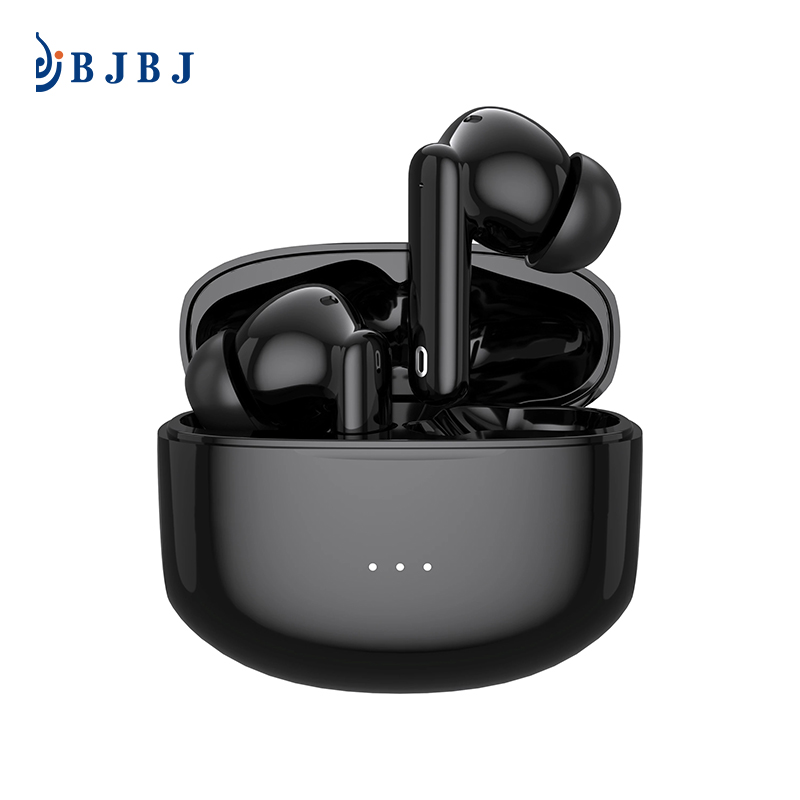Noise-canceling earbuds have gained immense popularity in recent years, offering a unique listening experience by effectively blocking out unwanted ambient sounds. Whether you’re a music enthusiast seeking an immersive audio experience or a frequent traveler looking for peace amidst noisy surroundings, understanding how noise-canceling earphone work is essential. In this essay, we will delve into the intricacies of noise-canceling technology, exploring the science behind it, the different types of noise-canceling earphone, and their benefits.
The Science Behind Noise-Canceling Technology
Noise-canceling technology operates on the principle of destructive interference, where sound waves are generated to counteract external noise, resulting in its cancellation. It involves a combination of hardware and software components working harmoniously to deliver a quieter and more immersive listening environment.

- 1. Microphones: Noise-canceling earbuds are equipped with tiny microphones that pick up external sounds. These microphones act as sensors, detecting ambient noise in the surroundings.
- 2. Noise Analysis: Once the microphones capture external sounds, the information is processed by an electronic circuitry system within the earbuds. This system analyzes the incoming noise and identifies its frequency and amplitude characteristics.
- 3. Anti-Noise Generation: Based on the analysis, the circuitry generates an inverted sound wave, also known as anti-noise or anti-phase sound. The anti-noise wave is precisely designed to be 180 degrees out of phase with the original ambient noise.
- 4. Noise Cancellation: The generated anti-noise wave is combined with the original sound wave in the earbud’s speaker driver. When the two waves meet, they interfere destructively, resulting in the cancellation of the ambient noise. The net effect is a reduction in the overall noise reaching the listener’s ears.
Types of Noise-Canceling Earbuds
There are two main types of noise-canceling earbuds: passive and active noise-canceling (ANC) earbuds. Each type employs a different approach to attenuate external noise and offers distinct advantages.
- 1. Passive Noise-Canceling Earbuds: Passive noise-canceling earbuds use physical materials and design elements to block out ambient noise. They typically feature an in-ear design with a snug fit that creates a physical barrier, preventing external sounds from entering the ear canal. The design may also incorporate noise-isolating ear tips made of foam or silicone, which further enhance the sealing effect. While passive noise-canceling earbuds provide some degree of noise reduction, their effectiveness is limited, particularly for low-frequency sounds.
- 2. Active Noise-Canceling (ANC) Earbuds: ANC earphone take noise cancellation to the next level by incorporating advanced technology. In addition to the passive noise-blocking design, they employ the active cancellation mechanism discussed earlier. ANC earbuds feature built-in microphones that capture external sounds, analyze them, and generate anti-noise waves to cancel out the detected noise. This technology is particularly effective in attenuating low-frequency noises, such as airplane engine hum or train rumble, providing a more immersive audio experience.
Benefits of Noise-Canceling Earbuds
The popularity of noise-canceling earbuds stems from the array of benefits they offer to users. Let’s explore some of the key advantages of using these earbuds.

- 1. Immersive Listening Experience: By canceling out external noise, noise-canceling earbuds allow users to fully immerse themselves in their audio content. Whether it’s music, podcasts, or movies, users can enjoy a clearer and more detailed sound, free from distracting ambient noises.
- 2. Reduced Hearing Fatigue: In noisy environments, such as crowded streets or public transportation, individuals often tend to increase the volume on their earbuds to compensate for the external noise. This can lead to hearing fatigue and potential long-term damage. With noise-canceling earbuds, users can listen at lower volumes, reducing the strain on their ears and maintaining their hearing health.
- 3. Increased Focus and Productivity: Noise-canceling earbuds can be beneficial in work or study environments where concentration is crucial. By minimizing background noise, these earbuds create a quieter space, enabling users to focus better on tasks, enhance productivity, and improve overall performance.
- 4. Enhanced Travel Experience: Traveling can often be accompanied by disruptive noises, whether it’s the hum of airplane engines or the chatter of fellow passengers. Noise-canceling earbuds offer a sanctuary of tranquility, allowing travelers to enjoy a peaceful journey by blocking out the surrounding noise.
- 5. Health and Well-being: Exposure to prolonged or excessive noise levels can have detrimental effects on mental and physical well-being. By reducing environmental noise, noise-canceling earbuds contribute to a calmer and more relaxing listening experience, promoting stress reduction and overall comfort.
Limitations and Considerations
While noise-canceling earbuds offer numerous benefits, it’s important to be aware of their limitations and consider certain factors before purchasing a pair.
- 1. Battery Life: Active noise-canceling earbuds require power to operate, and therefore, they rely on built-in batteries. Users should consider the battery life offered by the earbuds to ensure they can enjoy noise cancellation for an extended duration before recharging.
- 2. Sound Quality: Some users have reported a slight compromise in sound quality with ANC earphone compared to their non-noise-canceling counterparts. This can be attributed to the additional circuitry and processing involved in noise cancellation. However, advancements in technology have significantly reduced this disparity, and many high-quality noise-canceling earbuds now offer impressive audio performance.
- 3. Cost: Noise-canceling earbuds, particularly those with active noise cancellation, tend to be priced higher than standard earphone due to the advanced technology involved. Users should consider their budget and weigh the benefits against the cost when making a purchasing decision.
- 4. Fit and Comfort: The effectiveness of noise-canceling earbuds heavily depends on the fit and seal within the ear canal. It is essential to choose earbuds that come with multiple ear tip sizes or custom mold options to ensure a comfortable fit and optimal noise isolation.
Conclusion
Noise-canceling earphone have revolutionized the way we listen to audio in environments filled with ambient noise. By harnessing the principles of destructive interference, noise-canceling technology effectively reduces external sounds, providing users with a quieter and more immersive listening experience. Whether it’s for enjoying music, enhancing focus, or finding peace in noisy surroundings, noise-canceling earphone offer a range of benefits. Understanding the science behind their operation, the different types available, and considering their limitations allows consumers to make informed decisions when choosing noise-canceling earphone that best suit their needs. As technology continues to advance, we can expect further innovations in noise-canceling earbuds, elevating our audio experiences to new heights.
Read More:

